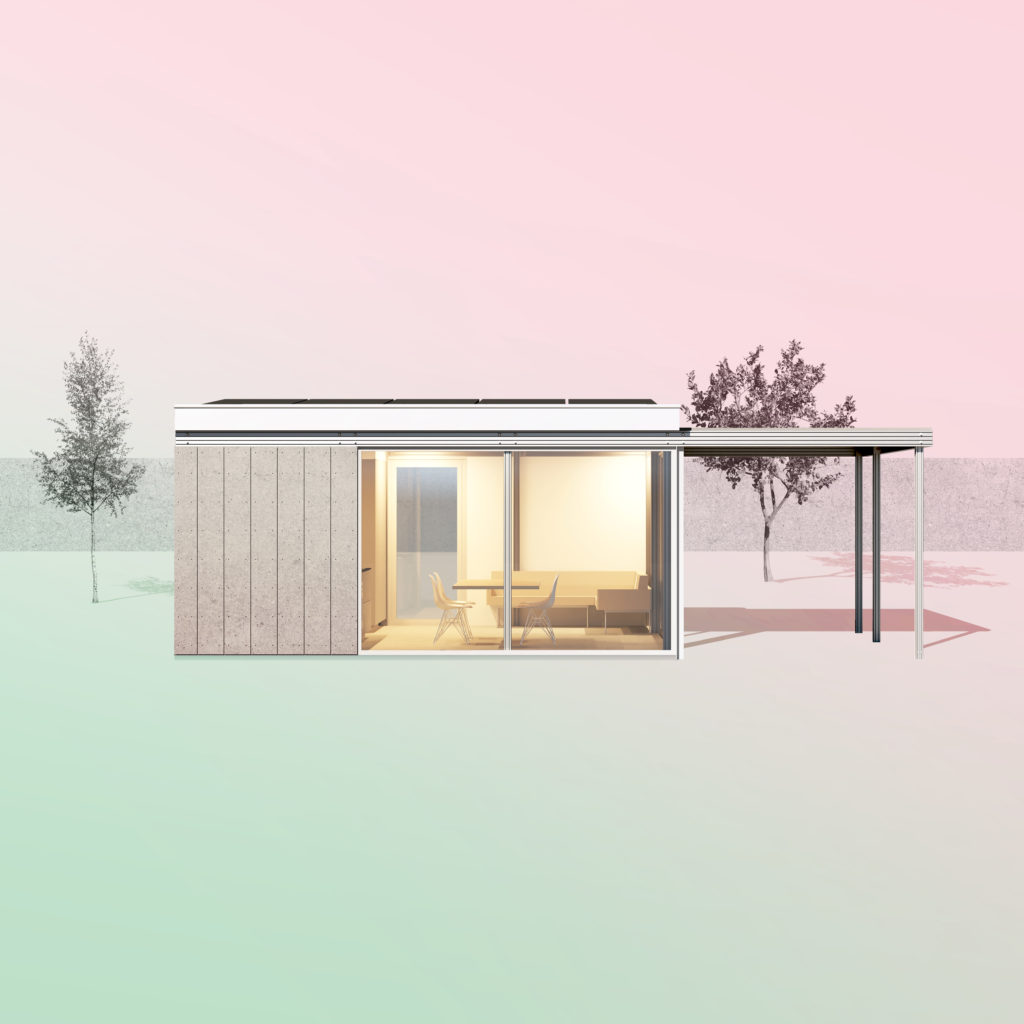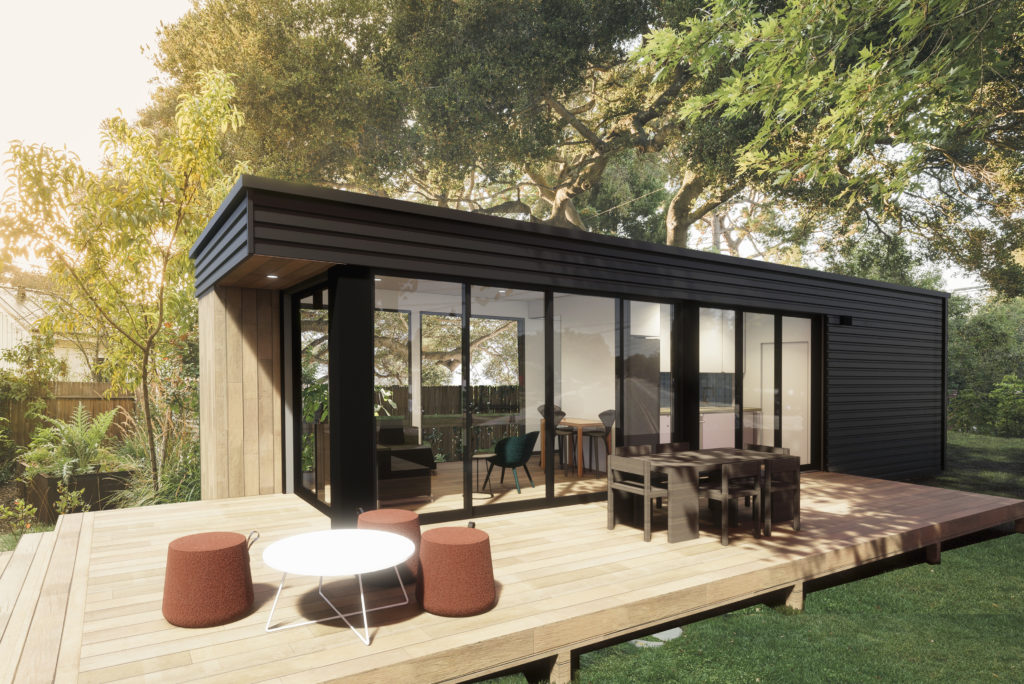By Sue Bady
Recognizing the growing popularity of accessory dwelling units (ADUs) in Los Angeles and their potential to alleviate the shortage of affordable housing, L.A. Mayor Eric Garcetti and the Los Angeles Department of Building Safety (LADBS) recently announced a new program that aims to simplify the permitting process and put attractively designed ADUs in back yards.
The LADBS Standard Plan Program includes more than 20 different designs ranging from 200 to 1,200 square feet. They incorporate elements of the diverse architectural styles that can be found in residential neighborhoods across Los Angeles, such as bungalow, mid-century modern, Art Deco, and Spanish. To accommodate varying site conditions, there are one- and two-story plans, some with roof decks, as well as a choice of elevations and porch styles.
According to LADBS, the plans have been reviewed and pre-approved for compliance with building, residential, and green codes. Once a homeowner or builder selects an approved plan, LADBS reviews site-specific factors for that property, including compliance with the zoning code and foundation requirements.
Flexibility in a standard plan
To kick-start the program, LADBS invited a group of architects and designers to contribute plans. One was Taalman Architecture, a Los Angeles-based firm that developed the IT House, which uses off-site fabrication and on-site assembly to achieve greater efficiency.
“Over the past five years, we have built a number of ADUs, some as the IT House type and some as conventional construction,” says Meg Murray of Taalman Architecture. “Either way, the biggest hurdle in making these small spaces work was the permitting process with the city, which is a big hurdle for a small project and required a significant investment on the part of the client.”
The Standard Plan Program will streamline the permitting process, saving clients time and money which they can then invest in higher quality, sustainable building materials and systems, says Murray.

There are six IT House plans in the program: the Tower, the Bar, the Box, the Cube, the Pod, and the Court. Each will fit on a standard 40-by-100-foot Los Angeles lot and has been engineered to meet California’s stringent Net Zero Energy Code. Murray says exterior doors and windows were positioned so that clients could flip, mirror, and/or rotate the plans on the site.
“We designed the structure to have built-in flexibility to adapt the locations of doors and windows and increase or decrease glazing,” she says. All structural elements were moved to the envelope of the building, so there are no interior columns or walls to inhibit residents from creating their own aesthetic. Homeowners decide whether they want custom-built cabinetry and designer faucets, or limit the decision making to the choice of exterior siding (aluminum or fiber cement).
The IT House designs include one-and two-story options that can be built after a one or two-car garage on the property is demolished. “We developed a one-story, 700-square-foot granny with two bedrooms and one bath, because that seemed like a desirable square footage,” says Murray, but also a plan that utilizes the maximum square footage allowed—1,200 square feet. That’s enough space for guests, family members, or renters to live comfortably.

Price stability and high quality
Connect Homes, an 11-year-old modular manufacturer based in Los Angeles, has had two models approved for the ADU program: Connect 1, a 460-square-foot plan, and Connect 2, a 640-square-foot plan. Each has one bedroom and one bath. Steve Sudeth, Vice President of Client Success, says, “We’re trying to bring modern design to a wider audience through innovations and prefabrication.” The two models have also been approved by the City of San Jose.
“I’m really excited by the program because it has a lot of different footprints and designs,” says Sudeth. ‘There is no standard back yard in L.A. The lots are either 40 by 100 or 50 by 100, but how [the homes are built] is completely unique.”
Like the other companies that submitted designs for the program, Connect Homes worked with Christopher Hawthorne, the city’s chief design officer. Hawthorne’s keen eye for the diverse styles of architecture in Los Angeles helped ensure that Connect’s modern steel-and-glass units would be a good fit.

Because the company uses steel framing and floor-to-ceiling glass, their ADUs land on the upper end of the price spectrum. However, Sudeth notes, the price won’t change unless clients make changes in the design or materials.
He is seeing a surprising trend: People building a new single-family home and an ADU at the same time. “Whether they have an open lot or they’re doing a teardown and replace, they’re thinking about how to get the secondary structure permitted and built,” says Sudeth. “They want to work with us on the site plan together to make sure the design is cohesive. That’s the most surprising thing.”
Post by Sue Bady, self-proclaimed “armchair architect” and advocate of sustainability, new building technology and most of all, good design.

